Poker players often get stuck on their red line. In recent years, super-aggressive proponents like Linus Löliger and Stefan Burakov have had a lot of success, with the red line going up on their charts.
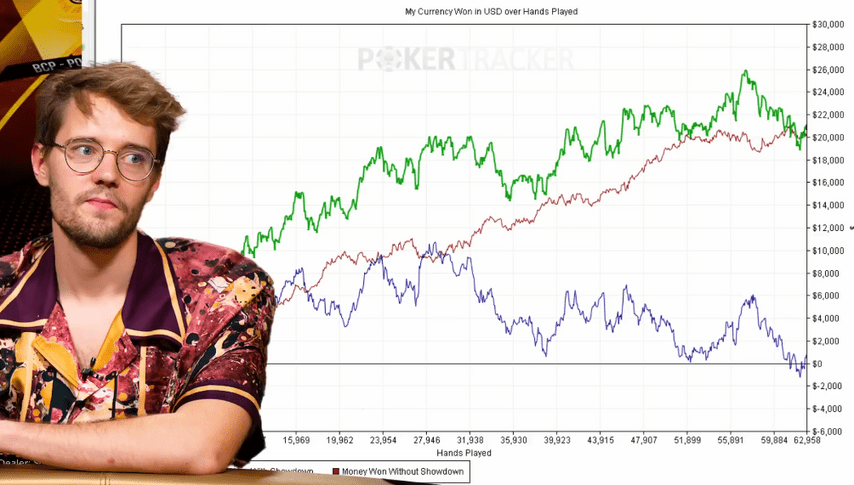
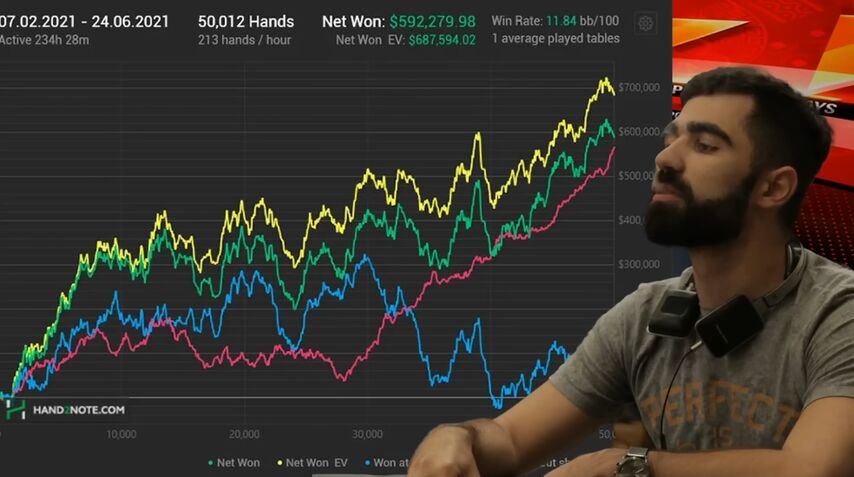
This direction of the red line is associated with aggressive and good play, and the opposite is believed to indicate passivity and insufficient quality of decisions made. At the same time, for the vast majority of poker players, the red line goes into a deep minus. Why is it so hard to pick it up? In this video, I will talk about three strategy flaws that are killing your red line and suggest a direction for working to eliminate them.
You don't use large sizings much
This problem is typical for most players, including high rollers. It can only be overcome by improving the theoretical understanding of optimal sizings in specific situations. For example, look at how people tend to c-bet on ace boards in single-raised pots: they prefer small sizing where the solver calls for overbets!
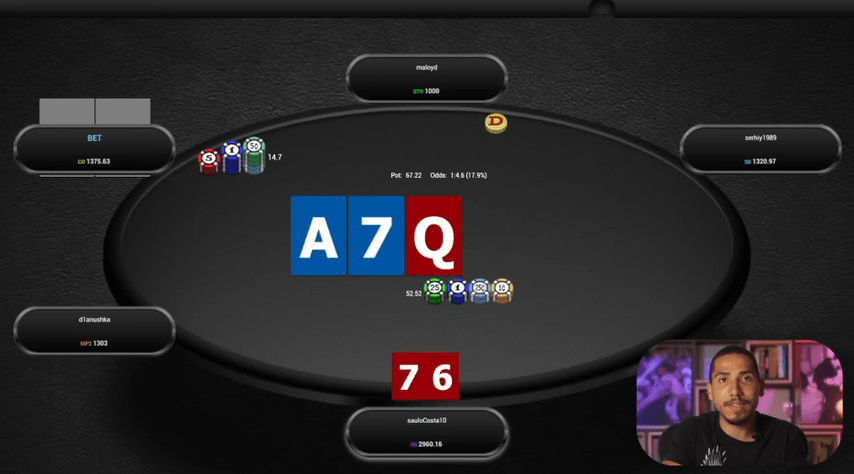
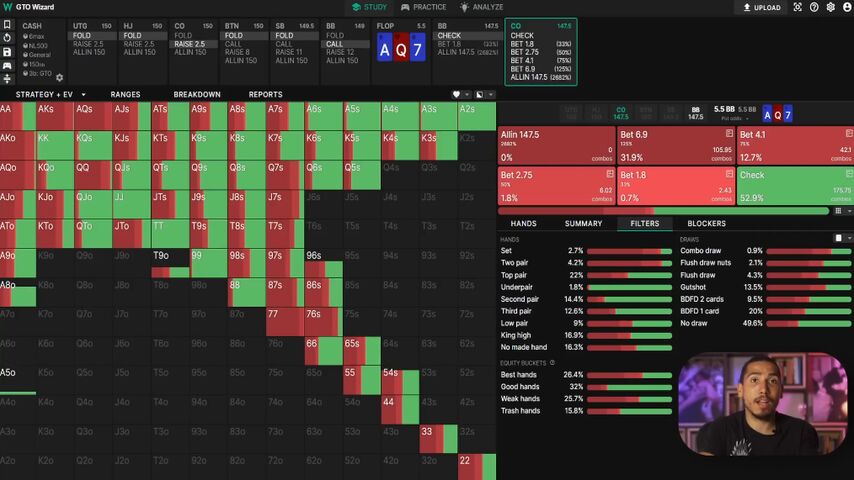
The same can be said for c-bets on low textures in 3-bet pots: everyone makes small c-bets, and the solver has a clear preference for larger ones.
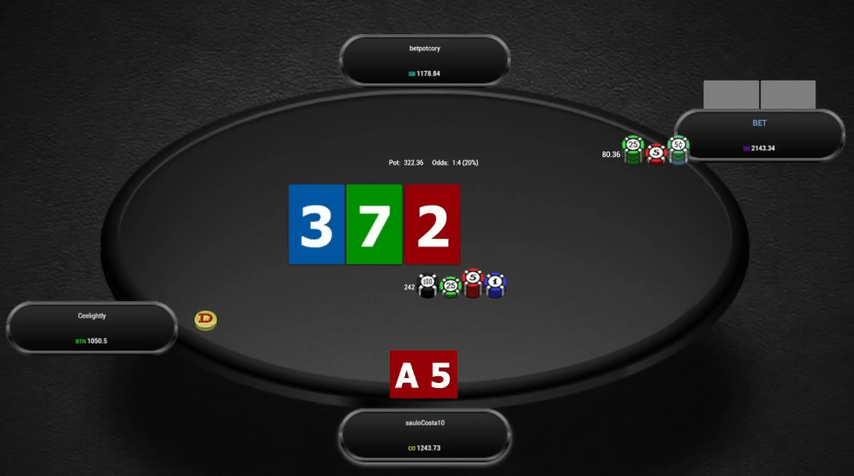
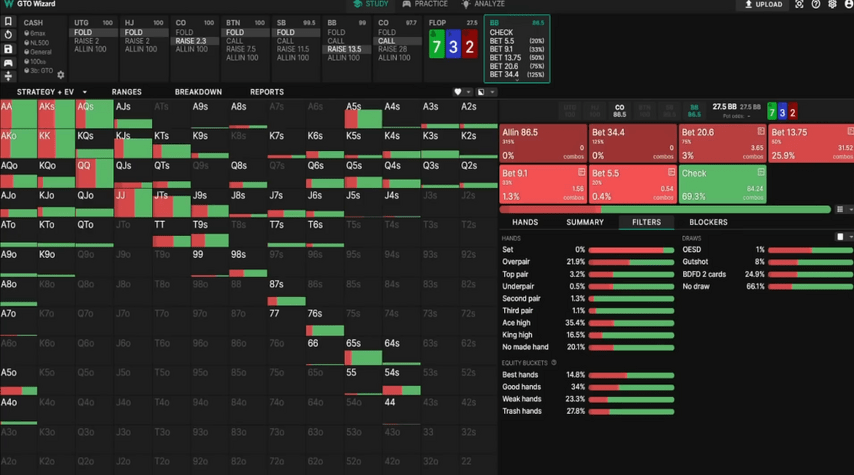
On the river, the solver regularly comes up with overbets, sometimes insanely large, 4-5 pots each. Regulars almost never do this.
Of course, the less often you use large sizings, the more your red line drops. Learn to recognize situations in which the solver expects overbets from you, apply this knowledge in the game, and you will quickly notice the desired effect.
You can take it a step further and use overbets not only where it should be done according to the optimal strategy, but as an exploit against your opponents' poorly formed ranges. Such situations arise at every turn. In passive lines, people tend to play with capped ranges – few people know how or want to protect passive lines the way a solver does. And against capped ranges, it is often advantageous for us to increase the sizing. Take a look at the following example.
Button vs. BB, single-raised pot. BB checks and calls a pot-bet on the flop . On the turn both check. Optimal strategy for the BB on the river – block bet 30% of the pot from about 2/3 of his range, overbet a little, and check with the rest of his hands.
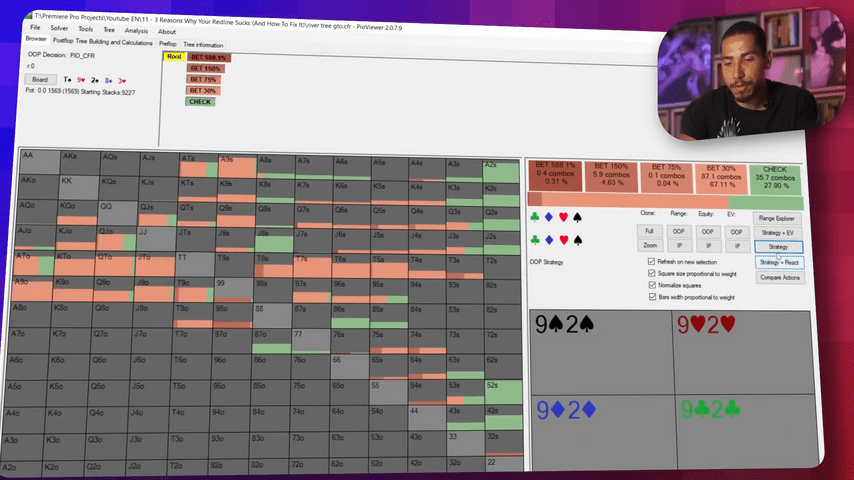
Seeing a check from the BB, the button checks next with 2/3 of his hands, and with the rest he chooses between half the pot and the full pot.
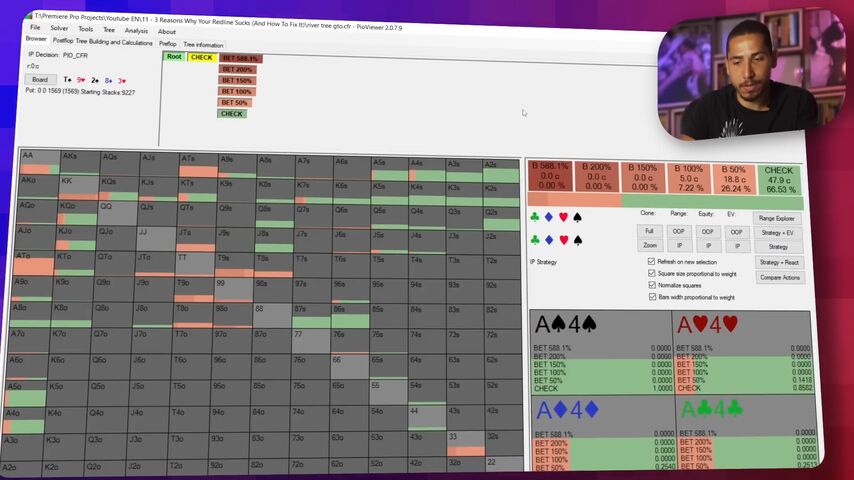
How will the button's strategy change if we assume that the player in the BB will show a slightly more capped range after checking? So, according to the optimal strategy, the BB very often blocks bets with . In practice, this is usually not the case. Assume the BB would rather check with most , and also slowplays fewer strong combinations than the solver. I will fix a strategy where the BB checks the second pair not 5% but 50% of the time and checks two pair, sets, and straights not 20% of the time but only 5%, and see how to deal with it solver.
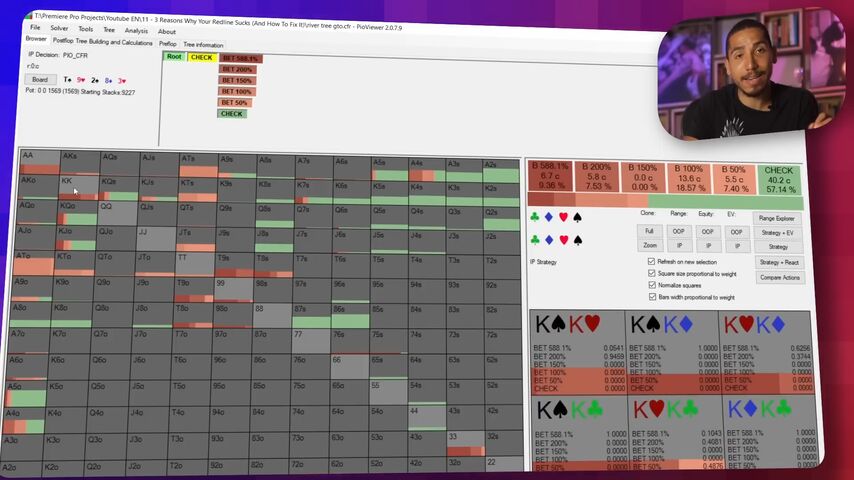
The main sizing for us is a full pot, however, quite a lot of double overbets and even almost 10% of all-ins are added to the strategy – almost six pot overbets! All-in often goes not only with two top pair, but even ! This is because the BB has halved the number of slowplays with two pair, sets, and straights, and also oversaturated the check range with bluff catchers.
Similar situations will arise in your games at every step, no matter if you play at the micros or high stakes, tournaments, or cash games. People always slide into capped ranges, they don't know how or don't want to slowplay strong combinations with the correct frequency. And increased sizing works well against capped ranges.
You overfold
If you are watching this video, I am 100% sure that you will overfold in all parts of the game tree preflop. Four or five years ago, the field overfolded even more, but now even high rollers are far from solvers. There are many reasons for this. One of them is that probabilistic thinking is alien to our brains. It is designed in such a way that it considers losing 80% of the hands as losing 100%, and does not want to call even when the pot odds allow it. The overfolds at all decision parts are of course sinking our redline, because some of the hands we fold can be pushed to showdown without affecting the redline, and with some of them we can even win without a showdown.
It would seem, what is the problem, that we overfold only marginal hands that can be played to zero or a very weak plus. However, if we never mix folds with anything else, small mistakes over the course of time accumulate and have a tangible impact on our outcome.
The only way to combat this problem is to improve understanding of the limits of the protection range. Practice, practice, and more practice. Constantly honing our knowledge of where the border between calling and folding lies on different textures, we gradually learn to make the right decisions almost unconsciously, intuitively.
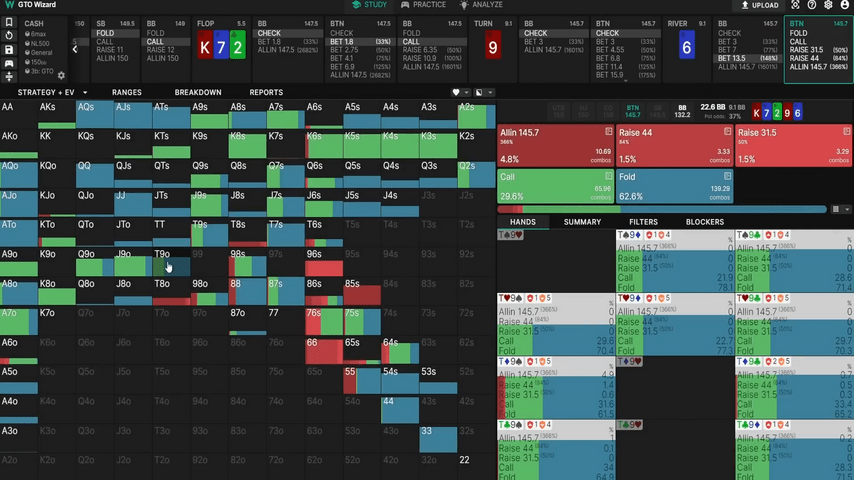
If we haven't trained enough, we'll have to think hard in every unfamiliar spot, and because of the inherent risk aversion of humans and the many distractions we're exposed to while playing, we'll inevitably end up overfolding.
My advice: practice until the right decisions become automatic for you.
You're bad at designing ranges.
This is the biggest problem that your red line suffers from. What is range compilation? Understanding which hands and how many to send to each branch of the decision tree. A range of betting or checking, calling, or raising quite often requires that the same combinations be present in it, but with different frequencies. Most people fail at the right frequencies, and sometimes even choose the wrong lines for their hands. Range errors are especially detrimental to your red line, but also to your blue line.
Let me give you an example so everyone can understand. Imagine you are in the BB against the small blind, he raises, and you call. The SB checks on the flop.
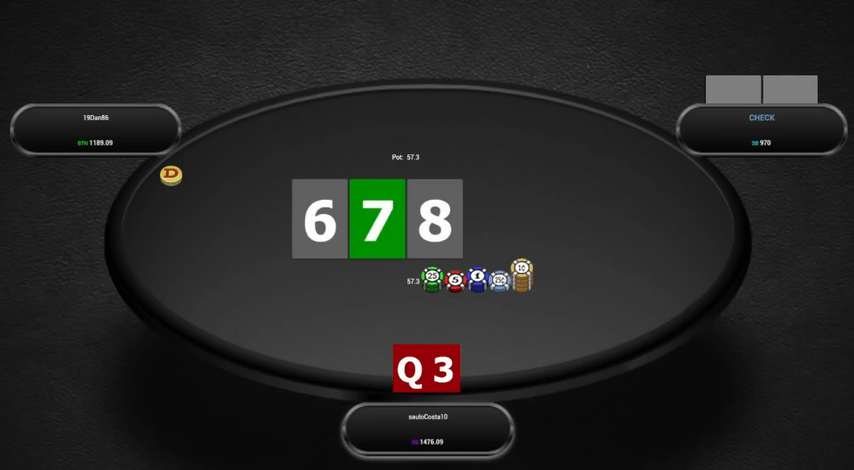
You have to decide which of the strong hands to slowplay and which of the garbage part of the range to bluff. You need to construct a betting range against a missed c-bet – and, accordingly, a check range.
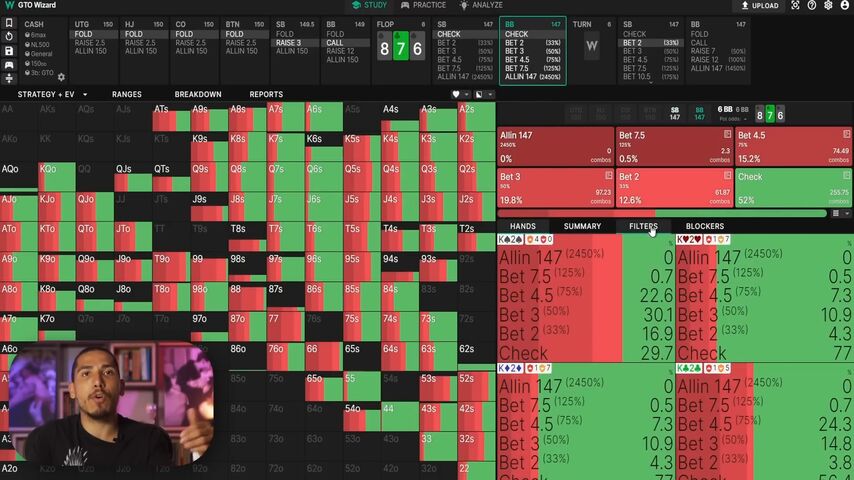
More often than not, people forget to slowplay and don't bluff enough with the bottom of their range, resulting in their checking range becoming fantastically weak. After that, it becomes almost impossible to fight with a delayed c-bet on the turn – you have to overfold.
Another common leak is the construction of a polar betting range on the turn.
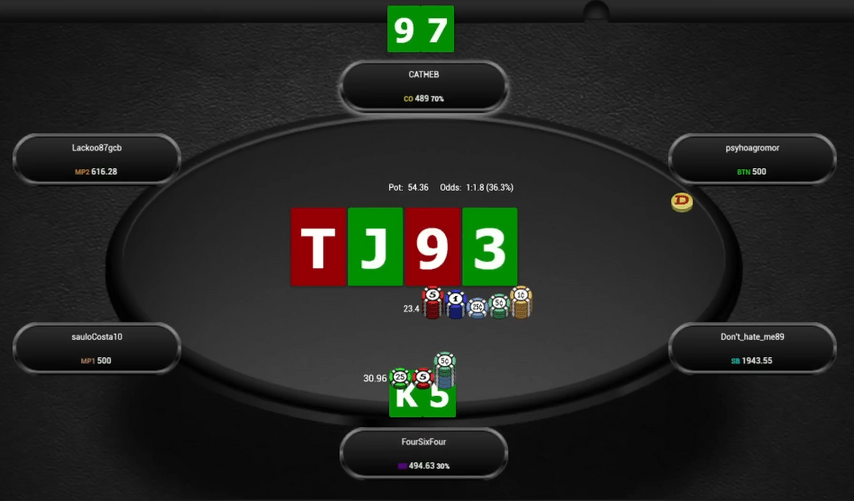
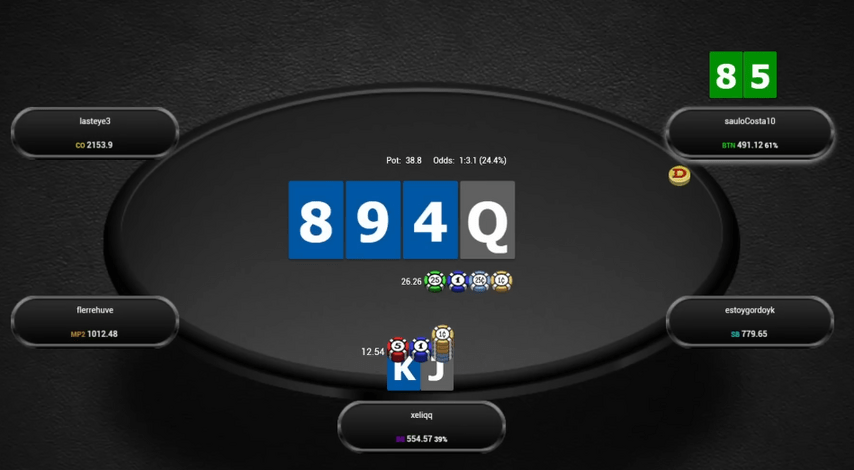
Many players bet the turn with draws too often, but when the draw misses, they hesitate to continue on the river, as they block the opponent's automatic folds.
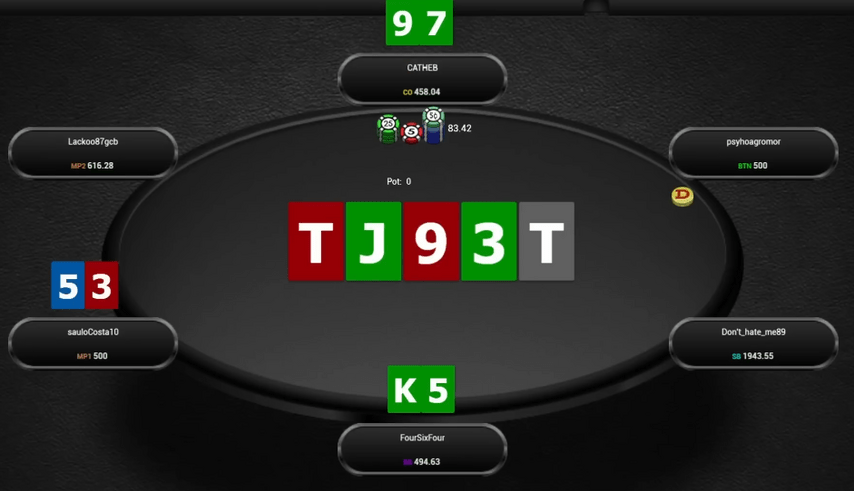
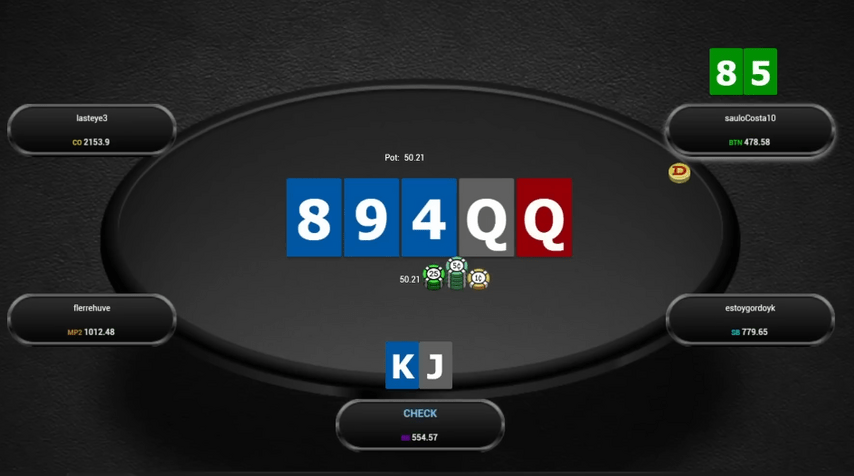
Refusing to continue bluffing, they lose a lot of money on the red line, and all because of the wrong choice of hands for barreling.
In general, not knowing how to build your ranges correctly is a fundamental problem that all poker players face. How to overcome it? That's right – exercise.
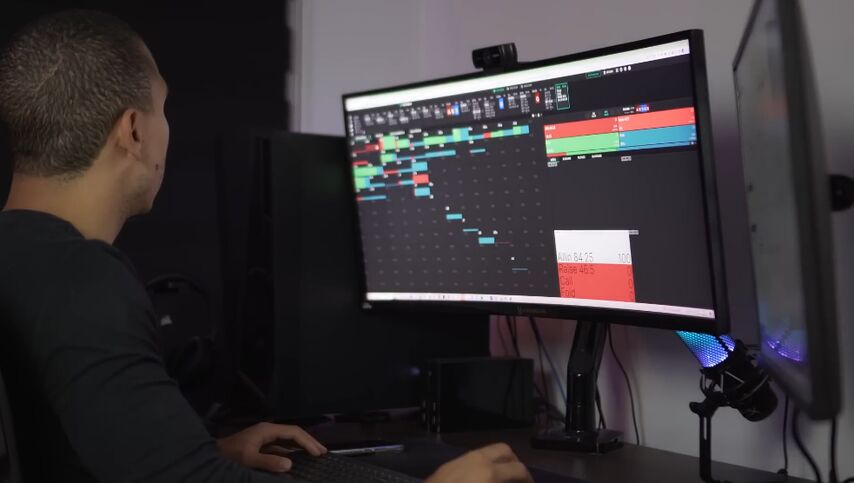
But not only mechanically remember what goes where – you must learn to understand the logic of why the solver chooses certain lines for different hands. If you do not understand the logic of the game, no amount of memory will help you. In general, I don’t have a simple solution for you – just download the understanding of the theory!
PS
marksnazzy4737
Hey Saul! Can't fix my red line by not overfolding! I play zoom 200 and beat the field, but the last time I saw a river bluff was around March. Only a couple of people have the courage to bluff, the rest of the regs are just dead nits. I think it's important to mention this because many opponents can and should be overfolded.
Yes, maybe in some spots I can call lighter, I'll work on it. On the other hand, there are situations in which people seem to have stopped bluffing altogether. I've shown BigStealer a lot of times, but I haven't seen a single bluff yet. The same goes for other regs like Sanctyy or ReadRaise – their bluff ranges are zero.
Saulu Costa
Buddy, I have good news and bad news for you. The bad news is that all this time you overfolded for nothing. Most Zoom 200 players rebluff most of the time (and lower stakes as well), so overfolds lose money. The good news is that this is easy to fix.
I don't think you will easily believe me on this matter. Well, this is not required – just open the base and sort out the main lines. Good luck!











